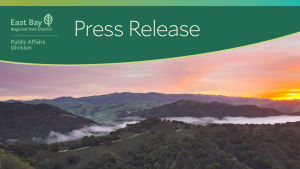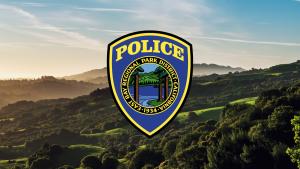With California Fires Raging, Agency Takes Action to Prevent a Blaze in the East Bay Hills
With California Fires Raging, Agency Takes Action to Prevent a Blaze in the East Bay Hills
With fires still burning statewide after a record-breaking summer, many Oaklanders are wondering what is being done to reduce the risk of fires starting in — and spreading from — the East Bay hills, where deadly blazes have cropped up in the past.
The East Bay Regional Park District (EBRPD) first adopted its fuel management plan in 2010, with the intention of keeping fires from starting and spreading in the hills.

The plan identifies several key areas where a fire could make the jump from public lands to neighborhoods, most notably Claremont Canyon, Leona Canyon, and Sibley Volcanic Regional Preserve. It aims to reduce the amount of tinder in those locations that could feed a blaze.
“We know that there will be fires," said Brad Gallup, acting assistant fire chief with EBRPD. "But [this plan is] doing something to help mitigate the effects of those fires ... Some of that is eucalyptus removal, some is brush removal, some is general fuel reduction."
Gallup describes fuel reduction in the East Bay hills as a three-pronged approach. The first stage is thinning, or increasing the distance between trees. The second is 'ladder fuel reduction,' which involves removing low-hanging branches and underbrush that make it easy for fire to climb from the ground to the canopy.
Finally, there's 'surface fuel reduction,' which aims to reduce the risk of grass fires through mowing, controlled burns, and grazing by cattle and goats.

Photo: East Bay Regional Park District/Facebook
Both the 1991 Oakland firestorm, which killed 25 people, and last fall's North Bay fires, which killed 44, began in fuel-dense wildlands, then quickly spread to densely populated urban areas. Last year, some homes and a school in the Oakland hills had to be evacuated due to a grass fire, which was quickly extinguished.
According to Gallup, local residents are critical to the success of EBRPD’s own efforts. He recommends residents practice fire management at home by removing debris, cleaning gutters of collected leaf litter, removing flammable materials from under decks, and clearing vegetation from where it comes in contact with the house. He especially advises clearing access points for fire crews.
“This is probably the most important thing homeowners can do to minimize the chance of fire, and to maximize the chance for firefighters to get access to their homes and put fires out,” he said.
Visitors to the parks also have a role to play. Gallup encourages parkgoers to pay attention to signage regarding fire danger and to not have barbecues during high-danger days. He also advises visitors to call 911 without delay at the first sign of smoke.

With more than 120,000 acres of open space in the East Bay Regional Park District, there’s a lot of land to oversee, and only a crew of around 40 to do it.
The EBRPD's fire prevention work is funded by the agency's own general funds, by grants, by Oakland Measure CC funding, and by the Federal Emergency Management Agency (FEMA).
“We do have several projects funded by FEMA scheduled to happen over the next five to ten years, some of which is eucalyptus thinning and some of which is brush work,” said Gallup.
Gallup acknowledges that not everyone is on board with how the EBRPD practices fuel reduction. Both the Hills Conservation Network and the Sierra Club have opposed some fuel reduction efforts in the past, on the grounds of the agency's work being either insufficient or overbearing.
“We understand that some people might not like to see the work done, but most people do,” said Gallup. “It’s important to help people understand why we’re doing it. It’s to protect people’s lives and property."
"We’re trying to prevent disastrous fires from occurring."
Learn more: Be Prepared. Wildfire Season in the East Bay
Source: Hoodlline.com, September 6, 2018, by Cirrus Wood
Dave Mason, Public Information Supervisor
(510) 544-2217
dmason@ebparks.org






